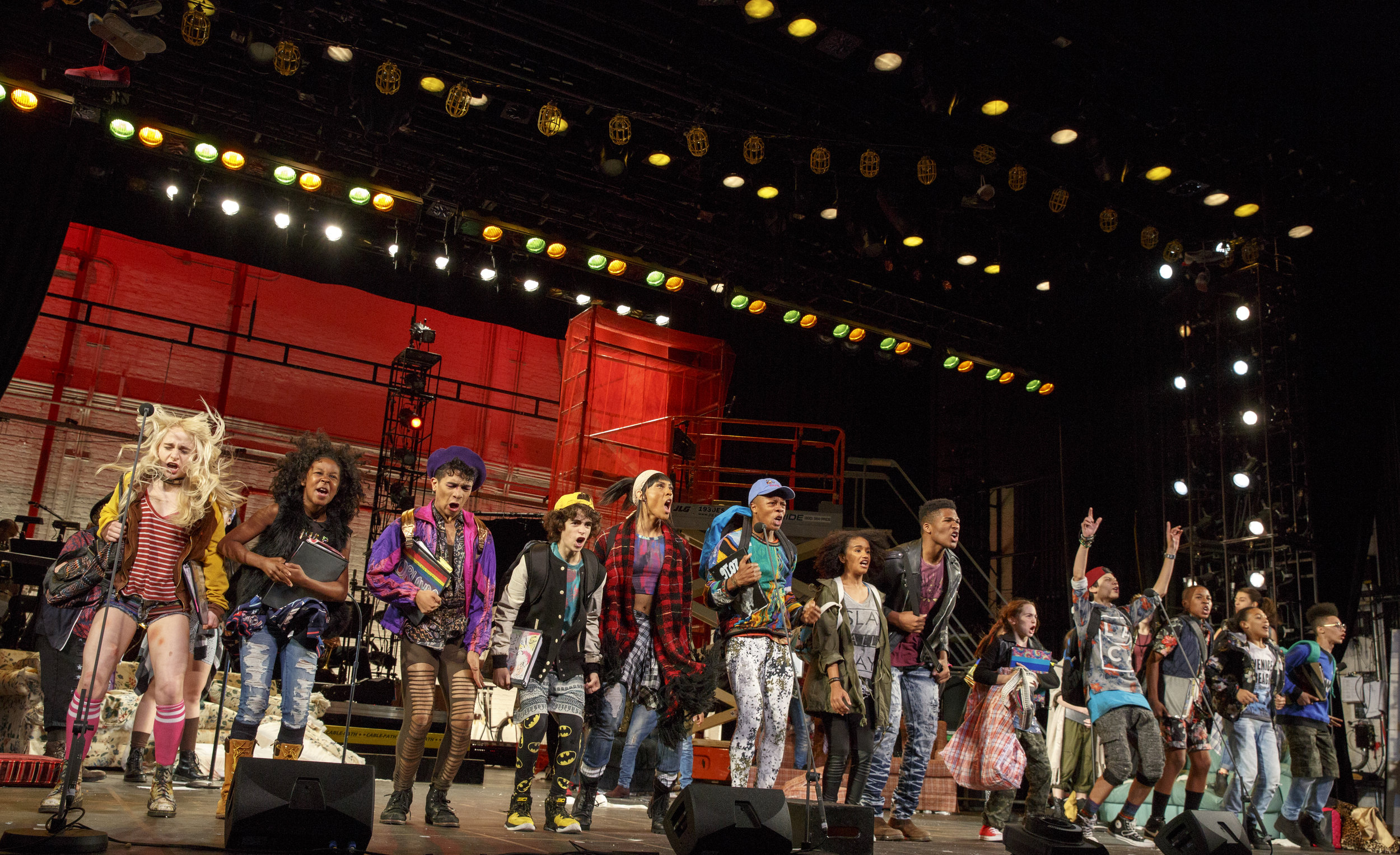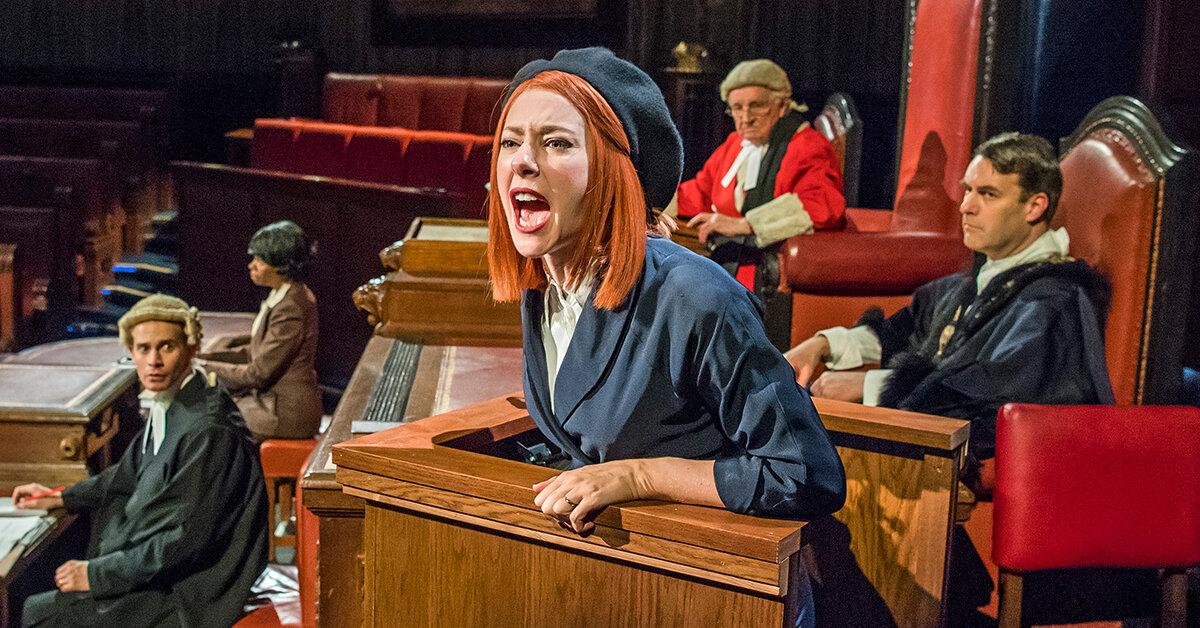
To create Runaways, which is getting an exciting and revealing revival at New York City Center, Elizabeth Swados talked to hundreds of street kids, and gathered together a cast of twenty ranging in age from eleven to twenty-three; five of them, like Swados herself, had run away from home. Although listed as author (and director, composer, lyricist, choreographer, and the band guitar player), Swados gave credit for “additional text” to ten of these original cast members, including Diane Lane, who helped shape the stories.
The result was a work of imagination rooted in the stories she heard. “I don’t claim to be an expert on the political, the radical aspects of running away,” Swados said then. “I know about it—I should, researching it for six months—but artistically if I focused on it, it would become more of a documentary.” Still, critic Mel Gussow declared the 1978 production “a serious, contemplative musical with something important to say about society today.”
The musical was a hit at the Public Theater, then transferred three months later to Broadway, where it ran a respectable 274 performances and was nominated for five Tony Awards (Musical, Book, Score, Direction, and Choreography). Swados went on to a richly inventive career as a theatre artist, primarily downtown, beloved by her many collaborators.
Now, thirty-eight years after its original Broadway run—and six months after Swados’ death at the age of sixty-four—Runaways has been revived as part of Encores Off Center, the summer version of the long-running Encores! concert series at New York City Center. Directed by Sam Pinkleton and choreographed by Ani Taj, both of whom were students of Swados, this production of Runaways showcases a talented and energetic cast of twenty-five, all between the ages of twelve and nineteen, as they present some three dozen songs and monologues over the course of ninety intense minutes.
Seeing the production four decades later is a revelation in several ways.
It’s startling to realize how much Runaways inspired shows to follow—or at least pioneered aspects of stagecraft for which later shows are now better known. Two decades before Rent and four decades before School of Rock, young people were singing on a mainstream stage of their angst and frustrations using the popular music of the day, a mix of folk, rock, punk, reggae, and even a sort of rap. “Liz Swados was using hip-hop on Broadway in 1978, ahead of EVERYBODY,” Lin-Manuel Miranda Tweeted when she died in January.
The original show featured Bruce Hlibok, a deaf performer who used sign language. This was long before Deaf West Theater’s production of Spring Awakening or Big River, and even before deaf actress Phyllis Frelich’s Tony-winning performance in Children of a Lesser God. Now, the very first thing we see in the new (rearranged) Runaways is an actress named Ren signing a monologue called “You Don’t Understand” (one of the pieces for which Hlibok was given writing credit).
The Encores cast features a higher proportion of people of color than the original cast and includes transgender actress MJ Rodriguez. However, the 1978 cast showcased diversity of a different kind. Before appearing in the show, only three of the twenty original cast members had had professional experience as performers. By contrast, almost all the Encores cast has professional performing credits, and I counted at least ten who have performed on Broadway, in shows ranging from Matilda and The King and I, to Waiting for Godot.
The performers are delightful, but the change is a symbol (if not a perhaps tacit admission) of the ways Runaways has changed from how it was initially perceived—as a raw, rough, fresh dose of reality—to how it works now primarily as an entertainment. The most memorable moments now occur when the entire cast is running and jumping in place during such numbers as the jazzy, athletic “Basketball Song,” led by Kenneth Cabral:
Here in these hands I hold a planet,
Bigger than the sun and stranger than the moon.
When my mom is sad and hating me I play basketball.
Yes, there is some effort to touch the audience. When Maxwell Vice talks about how scared he is, in piece entitled “Out in the Street,” he is carrying a notebook with a rainbow flag and the word “Orlando.”
And Runaways still retains its moments of brutality. “The Song of the Child Prostitute,” performed in 1978 by Diane Lane now features Sophia Ann Caruso, whose recent credits include Blackbird on Broadway, The Nether, and David Bowie’s Lazarus. She sings a sort of love song to her pimp:
I’ll be Mico’s number one girl forever,
or at least until I’m sixteen and can get my
learner’s permit,
to drive to Montana and be a rancher.
Yet, much of what seemed “important to say about society” in the musical when it debuted seems dated now, at best.
At the time, runaways were seen as (mostly white) kids from the Midwest who didn’t get along with their parents. That’s why the name “The Minnesota Strip” was given to a ten-block area west of Times Square full of runaways involved in a billion-dollar business of peep shows, prostitution, and drugs.
“Times Square has changed,” says Joey Lopez, in an understatement. Lopez was a homeless runaway in Times Square from the Bronx; his mother became a crack addict, and he had no choice but to get out. He became a drug user himself, and then a drug dealer.
That was two decades ago. Since its founding fourteen years ago, Joey has worked with runaways as a staff member at the Ali Forney Center which houses and protects homeless LGBT youth living on the streets of New York. The center is named after a homeless gender nonconforming youth who was murdered at the age of twenty-two.
The Minnesota Strip is no more, erased as part of the revitalization of the theatre district. Services for homeless youth have expanded. “You have a lot of options to get your life back,” Lopez says. “You can go to any borough now, and if you’re under twenty-one, you can access an emergency shelter.” (Once you reach twenty-one, however, the situation becomes far bleaker.)
Many runaways now are LGBT youth kicked out of their homes by homophobic “religious” parents or guardians, says Lopez. In general, he says, some 90 percent of runaways are Black or Latino. But, Lopez believes, the runaway landscape was never precisely the way it was depicted even in the 1970s; even then, there were plenty of local people of color and LGBT youth among the Minnesotans.
There is no explicit mention of homophobia or even of homosexual youth in Runaways. None of the characters curse, none exhibit the everyday bigotry of the streets. There are some scenes in which the characters describe abuse, but these seem either too over-the-top or generic to be credible; most of the pieces describe what can be characterized as normal adolescen
t angst.
“I never tried to make this totally realistic,” Liz Swados said in 1978. “There are some things that just don’t work in art.”
One can leave the Encores! production of Runaways fully entertained, but also full of questions. How realistic must a work of theatre be when claiming to explore a social issue? Should a work of theatre be an entertainment that allows us to escape from the world, or a piece of art that more or less forces us to engage in the world? Can a musical do both simultaneously?
This piece, “Runaways by Elizabeth Swados Four Decades Later” by Johnathan Mandell was originally published on HowlRound, a knowledge commons by and for the theatre community.

Heathers The Musical: 10 Facts for 10 Years

Agatha Christie’s Witness for the Prosecution: Meet the Characters

